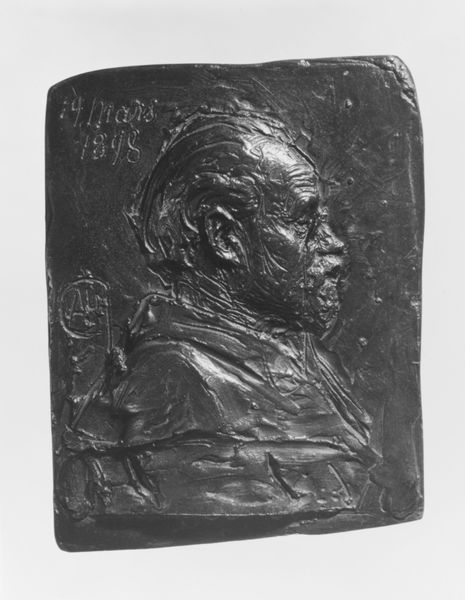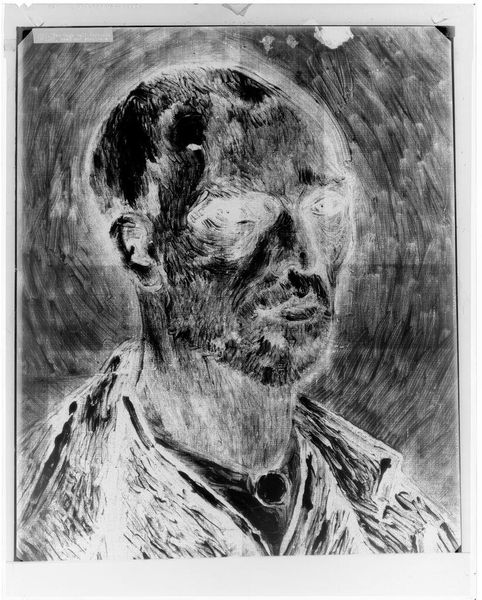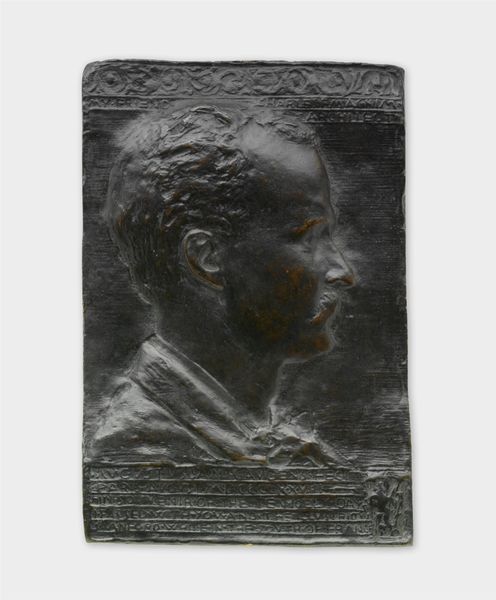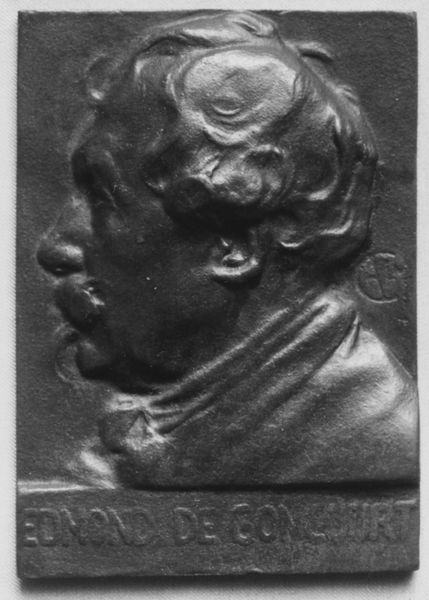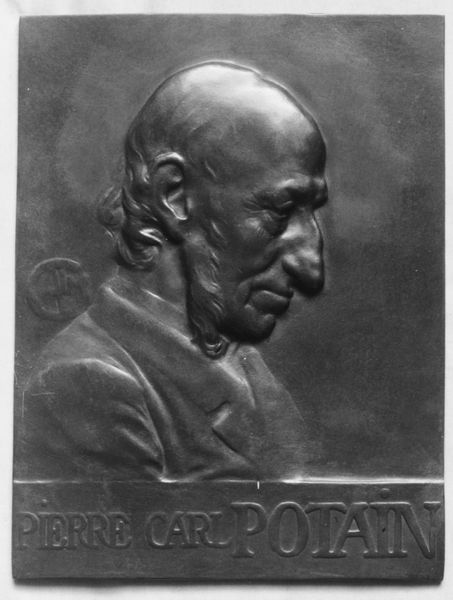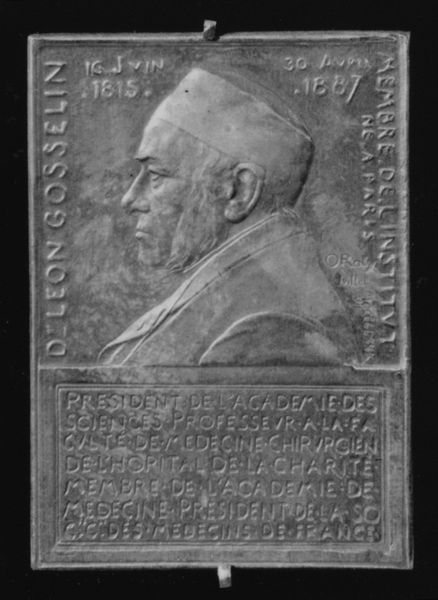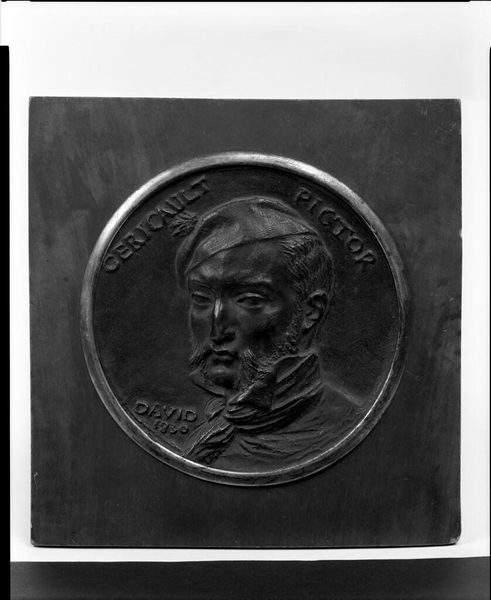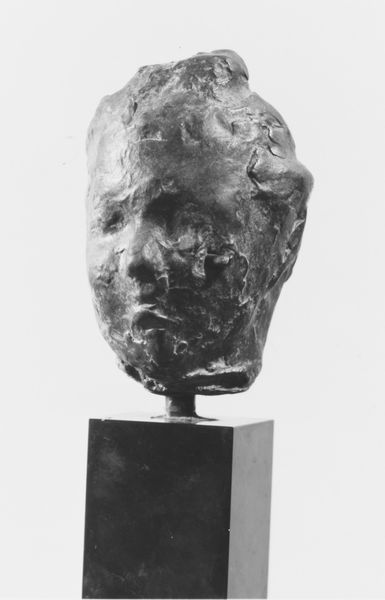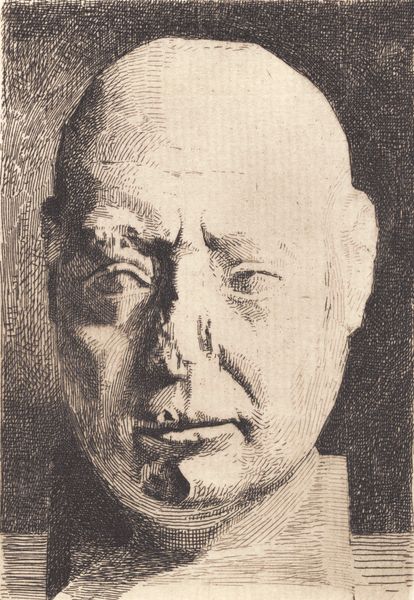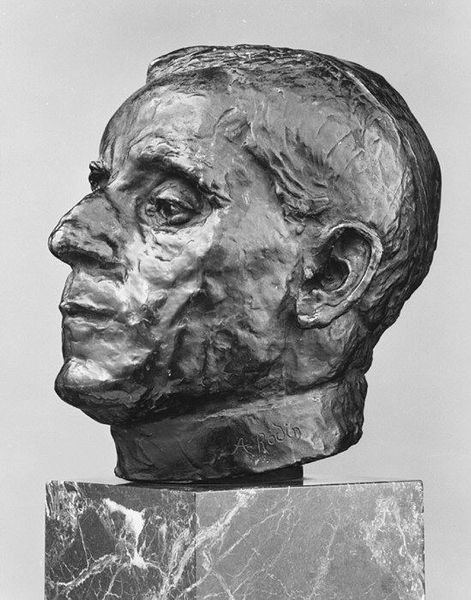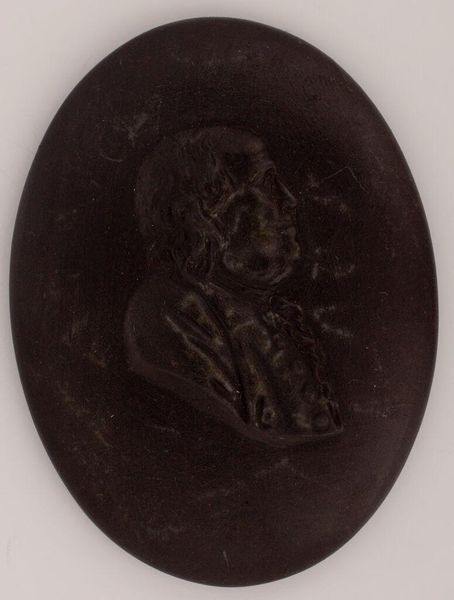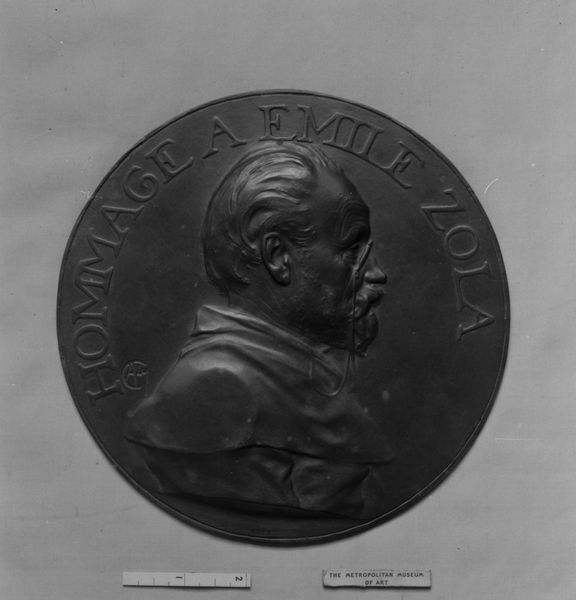
Portrait of Pierre Puvis de Chavannes (1824–1898), greatest of French decorative painters 1885 - 1899
0:00
0:00
relief, sculpture
#
portrait
#
sculpture
#
relief
#
sculpture
#
decorative-art
#
profile
Dimensions: 2 3/8 × 1 7/8 in. (6 × 4.8 cm)
Copyright: Public Domain
Editor: Here we have Alexandre Charpentier’s relief sculpture, "Portrait of Pierre Puvis de Chavannes," crafted sometime between 1885 and 1899. I'm struck by the stark simplicity and the tactile quality of the medium. It seems less concerned with idealizing the subject, and more interested in revealing the inherent qualities of the material itself. What do you see in this piece? Curator: I see a deliberate negotiation between "high art" portraiture and the more humble sphere of decorative craft. Charpentier was known for his involvement with Art Nouveau and the promotion of art for everyday life. This bronze relief isn't just a likeness of a famous painter, but an exploration of the very means of artistic production. Consider the material: bronze, often associated with grand public sculptures, here used in a relatively small, intimate format. How does the choice of bronze influence our understanding of Puvis de Chavannes' legacy? Editor: I suppose it challenges the idea of artistic genius existing in a vacuum. By rendering this great painter in bronze relief, a medium often associated with mass production and decorative arts, Charpentier is grounding him, literally, in a material reality. It shifts the focus from divine inspiration to the skilled labor involved in creating art. Curator: Precisely! And think about the labor involved in its creation. The process of sculpting, casting, and finishing the bronze highlights the artist’s hand and challenges any separation between "fine" and "applied" arts. Does the relative reproducibility of bronze—compared to, say, a unique oil painting—affect its value, its status as "art"? Editor: I hadn’t considered that. It makes me wonder about the social context too—who commissioned this, and how was it displayed? Curator: Those are essential questions. Perhaps it was meant for a private collector, a patron invested in the idea of blurring these very boundaries. Or, was it intended for broader circulation, potentially even as a mold for multiples, bringing art closer to the sphere of commerce and consumption? Editor: This has really shifted how I see portraiture. It’s not just about capturing a likeness but revealing the underlying network of labor, material, and social exchange that makes art possible. Curator: Indeed! By examining the materiality of art, we expose its inherent connections to the wider world.
Comments
No comments
Be the first to comment and join the conversation on the ultimate creative platform.
